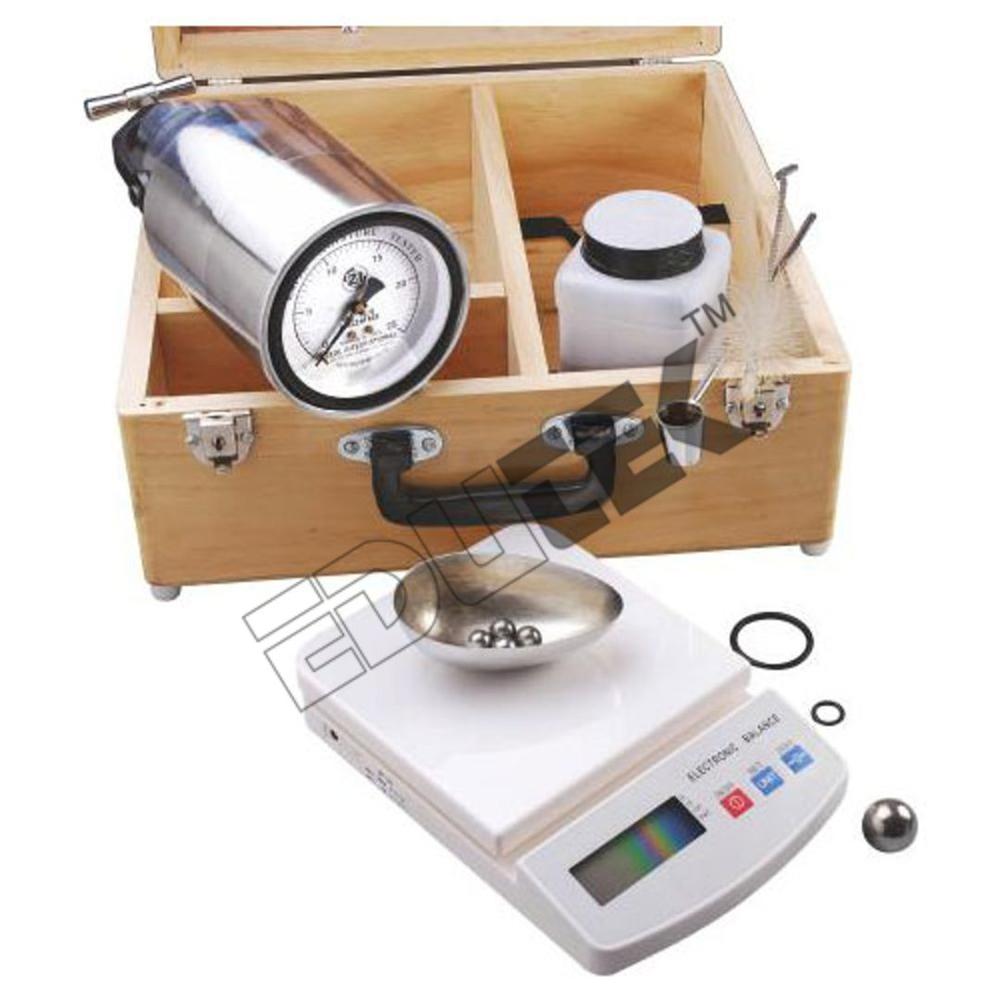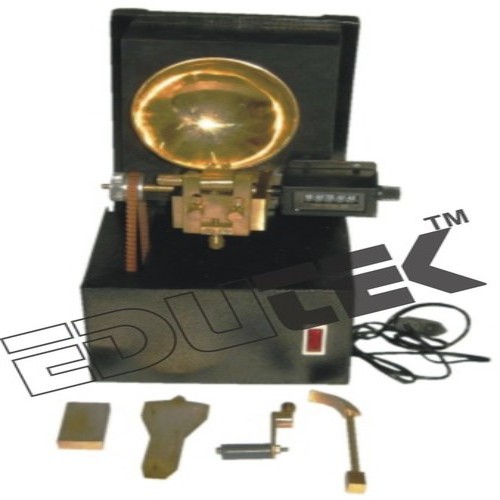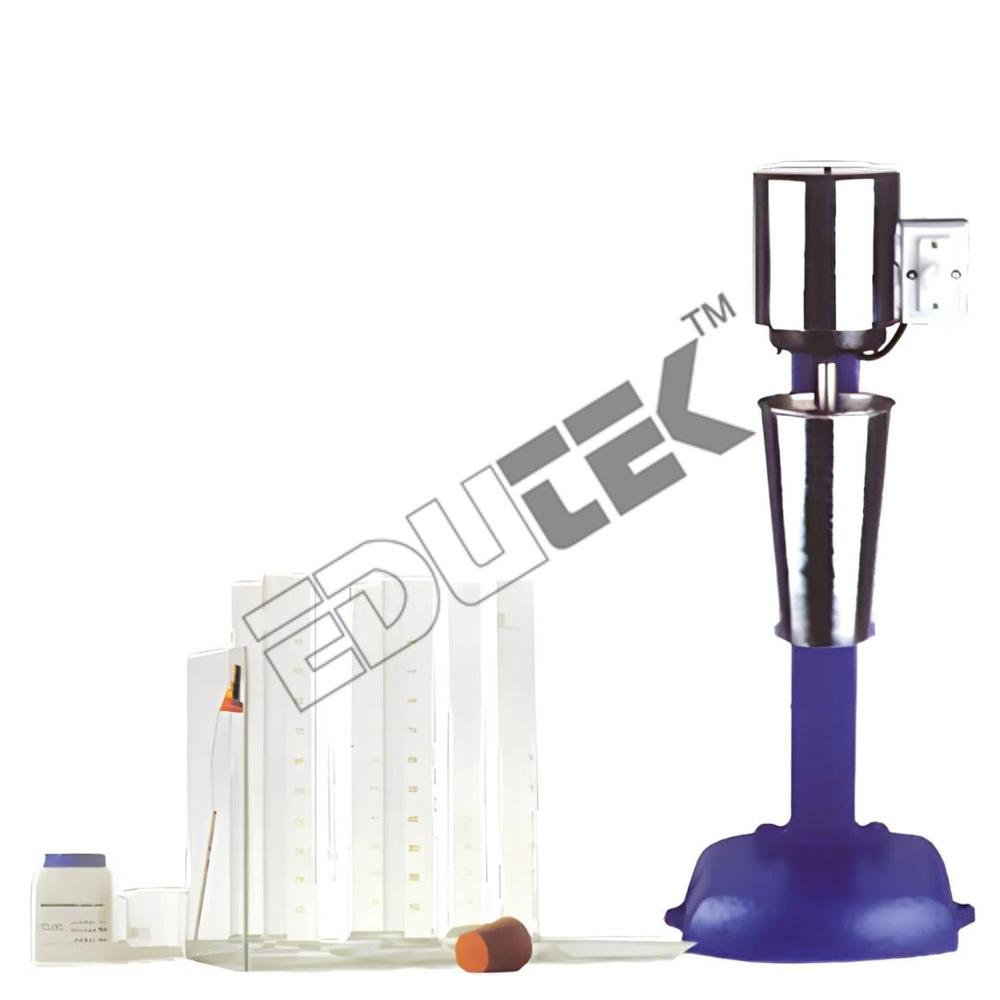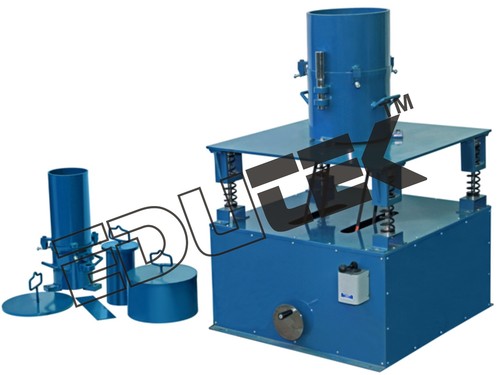Volume Change Gauge
Volume Change Gauge Specification
- Measurement Range
- 0-100 ml
- Feature
- Highly Efficient
- Automation Grade
- Manual
- Power Source
- Manual
- Core Components
- Burette, Pipette, Frame
- Frequency
- 50 Hz
- Accuracy
- 100 %
- Model No
- VCG-01
- Capacity
- 100 ml
- Temperature Range
- Room Temperature to 50C
- Equipment Materials
- Stainless Steel, Glass, Rubber
- Type
- Volume Change Gauge
- Usage
- Laboratory
- Display Type
- Analog
- Dimension (L*W*H)
- 300 mm x 120 mm x 180 mm
- Weight
- Approx. 2.5 kg
About Volume Change Gauge
- Single Burette -10ml capacity graduated in 0.05ml division
- 25ml capacity graduated in0.1ml division
- Twin Burette - 50ml. capacity graduated in 0.2 ml. divisions.
- The unit consists of two glass graduated burettes of 50 ml. x 0.2 ml. capacity enclosed in two perspex tubes sealed by two end caps.
- The manifold with valves enable the flow of fluid in the burettes to be reserved when the paraffin interfaces reach their limits in the burettes, the maximum capacity of measurement being only limited by the capacity of the mercury pots.
- The two burettes, enable the reduction in error in meniscus reading due to reversal of flow, the average of the two burettes being always taken as the volume change reading.
Reliable Volume Measurement for Soil Testing
The Volume Change Gauge is engineered to deliver precise measurement of water displacement during oedometer tests in soil mechanics. Thanks to its transparent burette and robust stainless steel frame, users can visually monitor volume changes up to 100 ml. The devices corrosion-resistant finish ensures durability, while the manual valve allows fine control and repeatable results, making it a valuable addition to any soil testing laboratory.
Engineered for Laboratory Excellence
This table-top volume change gauge is designed with laboratory environments in mind, featuring easy-to-clean materials and a compact footprint of 300 mm x 120 mm x 180 mm. Its analog display is intuitive to read, and the device functions efficiently at temperatures ranging from ambient to 50C, making it suitable for a variety of controlled test conditions. Manual operation ensures reliability, free from electrical interferences.
FAQs of Volume Change Gauge:
Q: How does the Volume Change Gauge operate during soil mechanics tests?
A: The gauge operates by manually controlling water flow with a valve, allowing users to precisely monitor the volume of water displaced during oedometer soil testing. Volume change is observed through an analog display on the transparent burette, with readings up to 100 ml.Q: What are the benefits of using this gauge in a laboratory setting?
A: This gauge offers highly efficient and accurate measurements, with corrosion-resistant materials ensuring long-term durability. Its compliance with IS standards and manual control make it ideal for rigorous laboratory use in soil mechanics research.Q: When should the Volume Change Gauge be used in soil mechanics testing?
A: The device is typically used during consolidation testing in an oedometer, where precise measurement of volume change in soil samples is required. It is suitable for tests conducted at room temperature up to 50C.Q: Where can the Volume Change Gauge be installed or positioned?
A: Designed for table-top use, the gauge can be easily set up on any stable laboratory bench. Its compact size and lightweight construction (approx. 2.5 kg) make it portable between workstations.Q: What process should be followed for accurate measurement with this device?
A: Ensure the gauge is properly connected to the oedometer apparatus, calibrate the analog display if needed, and manually operate the valve to control flow. Read the volume directly from the burette for precise results.Q: How can regular maintenance extend the gauges service life?
A: Routine cleaning of the burette, frame, and valves with non-corrosive agents and proper storage after use will maintain accuracy and prevent material degradation.Q: What materials are used to manufacture this Volume Change Gauge?
A: The equipment is constructed from corrosion-resistant stainless steel, transparent glass, and rubber components, contributing to both its longevity and high level of measurement accuracy.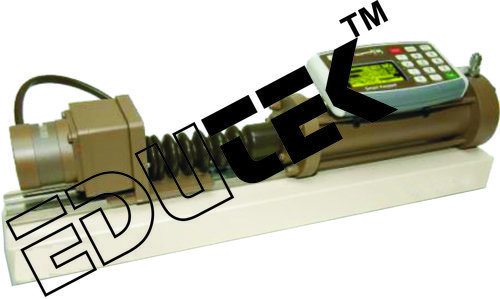

Price:
- 50
- 100
- 200
- 250
- 500
- 1000+
More Products in Soil Testing Equipments Category
Speedy Moisture Meter
Price 200.0 INR / Unit
Minimum Order Quantity : 1 Unit
Weight : Lightweight approximately 23 kg Kilograms (kg)
Type : Moisture measuring equipment
Feature : Portable setup for accurate moisture measurement
Usage : Quality control for compaction, earthworks, and concrete mix design
Motorised Casangarnde Equipment
Price 1000.0 INR / Unit
Minimum Order Quantity : 1 Unit
Weight : 57 Kilograms (kg)
Type : Motorised Casagrande
Feature : Motorised for consistency
Usage : Geotechnical engineering applications
Particle size analysis of soils
Price 700.0 INR / Piece
Minimum Order Quantity : 1 Piece
Weight : 1000 Grams (g)
Type : SOIL TESTING
Feature : This equipment is used to determine the quantitative size distribution of very fine particle in soils such as clay and silt.
Usage : This equipment is used to determine the quantitative size distribution of very fine particle in soils such as clay and silt.
Relative Density Test
Weight : Approx. 2.5 kg
Type : Relative Density Test Apparatus
Feature : Highly Efficient
Usage : Laboratory

 Send Inquiry
Send Inquiry
